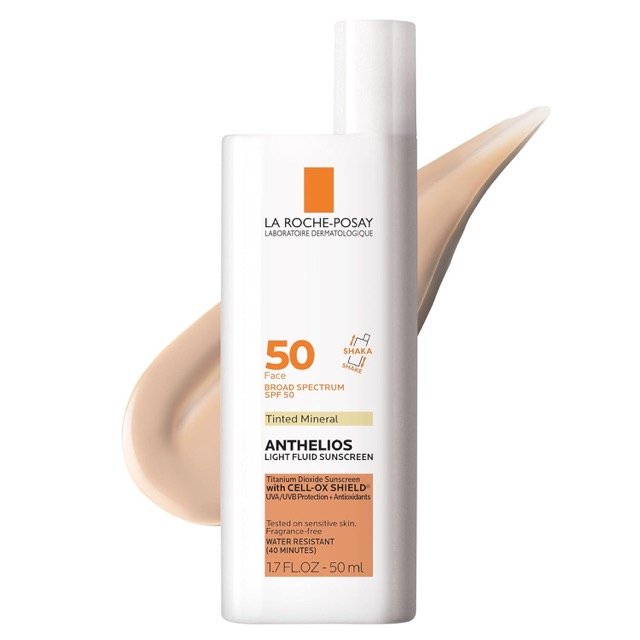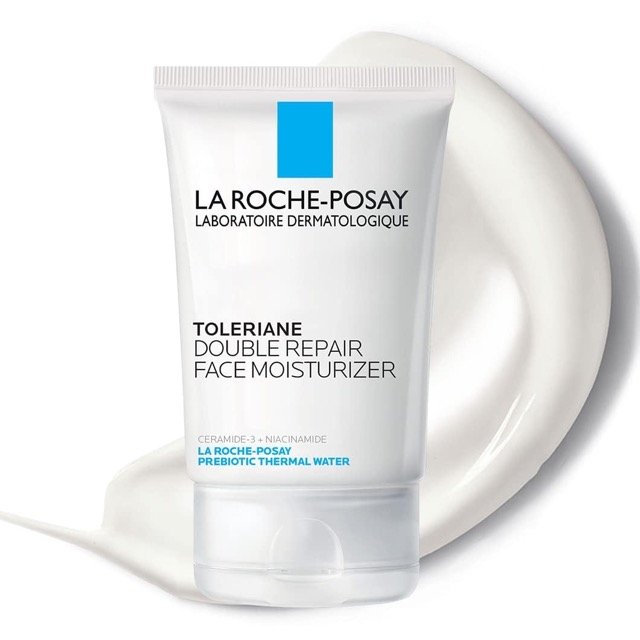Vinorelbine (Navelbine ) is a semisynthetic vinca alkaloid which binds to tubulin and inhibits microtubule formation.
It is used as a first-line treatment (in combination with cisplatin) of locally advanced or metastatic non-small cell lung cancer (NSCLC)
It is also the single-agent treatment of metastatic NSCLC.
-
Off Label Usage of Vinorelbine in Adults:
-
Metastatic Breast cancer
-
Persistent or recurrent cervical cancer
-
Relapsed or refractory Hodgkin lymphoma,
-
Malignant pleural mesothelioma
-
Relapsed Ovarian cancer
-
Recurrent Salivary gland cancer
-
Refractory Small cell lung cancer
-
Advanced soft tissue sarcoma
-
Vinorelbine Dose in Adults
Off label Dosage in the treatment of metastatic Breast cancer:
- 25 mg/m² intravenous once weekly (as a single agent) until disease progression or unacceptable toxicity
- An alternative is 30 mg/m² once weekly (as a single agent)
- After 13 weeks, Dosing interval can be changed to every 14 days (for patient convenience)
- It is continued until either the disease progress or the patient develops unacceptable toxicity.
- Another option is to give 25 mg/m² every 7 days (in combination with trastuzumab) until disease progression or unacceptable toxicity
- Another alternative dosage is 30 or 35 mg/m² days 1 and 8 every 21 days (in combination with trastuzumab) until disease progression or unacceptable toxicity.
Off label dosage in the treatment of Cervical cancer:
- 30 mg/m² intravenous on days 1 and 8 of a 2-week treatment cycle
Off label dosage in the treatment of relapsed or refractory Hodgkin lymphoma:
- GVD regimen:
- It is given 15 mg/m² (post-transplant patients)
- It can also be given as 20 mg/m² (transplant-naïve patients) on days 1 and 8 of a 21-day cycle (in combination with gemcitabine and doxorubicin liposomal) for 2 to 6 cycles
- IGEV regimen:
- It is given 20 mg/m² on day 1 of a 2-week cycle (in combination with ifosfamide, mesna, gemcitabine, and prednisolone) for 4 cycles
Off label dosage in the treatment of malignant pleural mesothelioma :
- It is given 30 mg/m² (maximum dose: 60 mg) every 7 days per 6-week treatment cycle
- It is continued until disease progression
- It is also be given 30 mg/m² (maximum dose: 60 mg) every 7 days for 6 weeks, off 2 weeks, then repeat the cycle
Dosage in the treatment of Non-small cell lung cancer (NSCLC):
Metastatic (single-agent therapy):
- It is given 30 mg/m² once a week
Locally advanced or metastatic (in combination with cisplatin):
- It is given 25 mg/m² on days 1, 8, 15, and 22 of a 28-day cycle or 30 mg/m² once a week
Advanced NSCLC (off-label dosing):
- It is given 25 to 30 mg/m² days 1, 8, and 15 every 28 days (in combination with gemcitabine) for 6 cycles or until disease progression or unacceptable toxicity occurs
Off label dosage in the treatment of relapsed Ovarian cancer:
- It is given 25 mg/m² intravenous every 7 days
- It is also be given 30 mg/m² days 1 and 8 of a 21-day treatment cycle until disease progression or unacceptable toxicity occurs
Off label dosage in the treatment of recurrent Salivary gland cancer:
- It is given 25 mg/m² intravenous on days 1 and 8 of a 21-day cycle (in combination with cisplatin) for a minimum of 3 cycles and for up to 6 cycles
Off label dosage in the treatment of refractory Small cell lung cancer:
- It is given 25 or 30 mg/m² intravenous every 7 days until disease progression or unacceptable toxicity.
Off label dosage in the treatment of advanced Soft tissue sarcoma:
- It is given 25 mg/m² intravenous on days 1 and 8 of a 21-day treatment cycle (in combination with gemcitabine) until disease progression or unacceptable toxicity occurs
Vinorelbine Dose in Childrens
Dose in the treatment of refractory or recurrent Hodgkin’s lymphoma:
- Children ≥10 years and Adolescents:
- It is given 25 mg/m² IV once weekly on days 1 and 8 of a 3-week cycle in combination with gemcitabine
Dose in the treatment of refractory, or recurrent acute Leukemias (ALL, AML):
- Infants:
- It is given as 67 mg/kg once weekly on days 0, 7, 14 of a 2-week cycle in combination with topotecan, clofarabine, and thiotepa (TVTC regimen)
- Children and Adolescents:
- It is given 20 mg/m² once weekly on days 0, 7, and 14 of a 2-week cycle in combination with topotecan, clofarabine, and thiotepa (TVTC regimen)
Dose in the treatment of refractory or recurrent solid tumors:
- Children and Adolescents:
- Monotherapy:
- It is given 30 mg/m once weekly for weeks 1-6 of an 8-week cycle for 10 courses
- It may be reduced to 27 mg/m for Grade 3 or 4 hematologic toxicity in patients who show an objective response or who have had treatment delay beyond 63 days (week 9) from the previous course
- Combination therapy:
- It is given 25 mg/m² once weekly for 3 weeks on days 1, 8, and 15 of each 4-week cycle in combination with cyclophosphamide
- Dosing adjustment for toxicity:
- The presented dosing adjustments are based on the dosage given in adult patients. Refer to a specific protocol for management in pediatric patients if available.
- Monotherapy:
- In patients with hematologic toxicity and hepatic impairment at the same time, give the lower of the doses determined from the adjustment recommendations.
- Granulocyte counts should be more than 1000 cells/mm³ before the administration of vinorelbine.
- Adjustments in the dose should be made on granulocyte counts obtained on the day of treatment as follows:
- Granulocytes more than 1500 cells/mm³ on day of treatment:
- Give 100% of starting dose
- Granulocytes 1000-1499 cells/mm³ on day of treatment:
- Give 50% of starting dose
- Granulocytes <1000 cells/mm on day of treatment:
- Do not give. Repeat granulocyte count in 1 week; if 3 consecutive doses are not given because granulocyte count is <1000 cells/mm³, stop vinorelbine.
- For patients who, during treatment, have experienced fever and/or sepsis while granulocytopenia or had 2 consecutive weekly dose not given due to granulocytopenia, subsequent doses of vinorelbine should be:
- 75% of the starting dose for granulocytes more than 1500 cells/mm³
- 50% of the starting dose for granulocytes 1000-1499 cells/mm³
- Neurotoxicity ≥grade 2:
- Stop treatment
- Severe adverse events:
- Reduce dose or stop treatment
- Granulocytes more than 1500 cells/mm³ on day of treatment:
Vinorelbine pregnancy Risk Factor: D
- Vinorelbine may cause harm to the fetus if given to pregnant women.
- Before treatment can be initiated for females with reproductive potential, it is important to verify their pregnancy status.
- For effective contraception, pregnant women of reproductive potential must be advised that they are able to use it during vinorelbine treatment as well as for six months afterward.
- Effective contraception should be used by males who have female partners with reproductive potential during treatment and for three months after the last vinorelbine dosage.
- Vinorelbine may damage the spermatozoa, which can lead to decreased fertility in male patients.
Vinorelbine can be used during lactation
- Breastfeeding is not recommended during treatment or for the first 9 days following the last vinorelbine dose.
Vinorelbine (Navelbine) dose in Renal disease:
There are no dosage adjustments given in the manufacturer's labeling.
Hemodialysis:
- Initially reduce dose to 20 mg/m² once a week
- Then administer either after dialysis (on dialysis days) or on nondialysis days
Vinorelbine (Navelbine) dose in Liver disease:
- Patients with concomitant hematologic toxicities and hepatic impairment should be given the lowest dose as per the adjustment recommendations.
- Patients with hepatic impairment should be cautious.
- Patients who become hyperbilirubinmic after treatment with vinorelbine should adjust their dose for total bilirubin, as follows:
- Serum bilirubin lower than 2 mg/dL
- Take 100% of the dose
- Serum bilirubin, 2.1 to 3.0 mg/dL
- Half the dose should be given
- More than 3 mg/dL serum bilirubin:
- 25% of the dose should be given
- Patients with advanced liver metastases (more that 75% of the liver volume) (breast Cancer):
- Half the dose should be given
- Serum bilirubin lower than 2 mg/dL
Common Side Effects of Vinorelbine Include:
- Central Nervous System:
- Neurotoxicity
- Peripheral Neuropathy
- Dermatologic:
- Alopecia
- Gastrointestinal:
- Nausea
- Vomiting
- Constipation
- Diarrhea
- Hematologic & Oncologic:
- Neutropenia
- Leukopenia
- Anemia
- Hepatic:
- Increased Serum Aspartate Aminotransferase
- Local:
- Injection Site Reaction
- Pain At Injection Site
- Neuromuscular & Skeletal:
- Asthenia
- Renal:
- Increased Serum Creatinine
Less Common Side Effects of Vinorelbine Include:
- Cardiovascular:
- Localized phlebitis
- chest pain
- Central nervous system:
- Neuropathy
- Hematologic & oncologic:
- Febrile neutropenia
- thrombocytopenia
- Hepatic:
- Increased serum bilirubin
- Infection:
- Sepsis
- Otic:
- Ototoxicity
- Respiratory:
- Dyspnea
Frequency not defined:
- Gastrointestinal:
- Intestinal Necrosis
- Intestinal Obstruction
- Intestinal Perforation
- Paralytic Ileus
- Hematologic & Oncologic:
- Bone Marrow Depression
- Hepatic:
- Hepatotoxicity
- Respiratory:
- Interstitial Pulmonary Disease
- Pulmonary Toxicity (Including Acute Respiratory Distress Syndrome
- Interstitial Pneumonitis
- Severe Acute Bronchospasm)
Contraindication to Vinorelbine Include:
- The manufacturer's labeling does not list any contraindications.
Warnings and precautions
- Suppression of bone marrow: [US Boxed Warning]
- Septic shock, death, or severe myelosuppression can result in serious infections, hospitalizations, and even death.
- It could require treatment interruption, dose reduction and/or discontinuation.
- Vinorelbine can cause anemia, neutropenia, and thrombocytopenia. It can be used alone or in combination with other chemotherapy.
- Neutropenia, which is the most severe dose-limiting toxicity (grades 3 and 4 neutropenia have often been observed).
- Neutropenia can lead to hospitalization for fever and/or sepsis.
- The neutrophil nadir is reached between 7-10 days after administration. Recovery occurs within 7-14 days.
- Before each dose, monitor your complete blood count.
- Based on blood counts taken on the day of therapy, adjust the dose.
- If ANC is less than 1000/mm, do not administer.
- Extravasation
- Before infusion, use Vesicant to ensure the proper position of the needle or catheter.
- Avoid excessive use.
- Extravasation can lead to tissue necrosis or thrombophlebitis.
- Gastrointestinal toxicities:
- Vinorelbine may cause severe and fatal paralytic and fatal ileus, necrosis and intestinal obstruction. Perforation can also occur.
- To reduce constipation, bowel obstruction, and paralytic ileus, you can start a prophylactic stool regimen.
- Oral vinorelbine has moderate antiemetic properties
- To prevent nausea/vomiting, antiemetics can be used
- IV vinorelbine is very low in emetic potential
- Hepatotoxicity
- Patients receiving vinorelbine can experience a drug-induced increase in transaminases or bilirubin elevations. This could be either as a single-agent treatment or in combination chemotherapy.
- Before treatment begins, monitor liver function and continue to do so throughout treatment.
- Patients with total bilirubin levels >2 times the ULN should be advised to reduce their doses.
- Vinorelbine elimination occurs predominantly through the liver; patients with impaired hepatic function should be cautious and dose reductions advised.
- Neuropathy
- Patients who receive vinorelbine may develop motor and sensory neuropathies.
- Monitor for signs and symptoms of muscle weakness or neuropathy. This includes paresthesia, hyperesthesia, hyporeflexia, and hyperesthesia.
- Vinorelbine should be stopped if you have >= grade 2 neuropathy.
- Toxicity in the lungs:
- Vinorelbine can cause pulmonary toxicity. This includes severe acute bronchospasm and interstitial pneumonitis.
- The median time it took for interstitial pneumonia and ARDS to develop was 7 days. This ranged from 3 to 8 days.
- Patients who have unexplained dyspnea, or any evidence of pulmonary toxicities should be treated with vinorelbine.
- Stop vinorelbine permanently if you have been diagnosed with interstitial pneumonitis (ARDS) or confirmed interstitial pneumonia.
Monitor:
- CBC with differential and platelet count (before each dose, and after treatment),
- Liver function tests;
- Confirm pregnancy status in females of reproductive potential prior to treatment initiation.
- Monitor for new-onset pulmonary symptoms (or worsening from baseline);
- monitor for new or worsening symptoms neuropathy.
- monitor for signs and symptoms of constipation and ileus
- monitor infusion site regularly
How to administer Vinorelbine?
For intravenous use only. It may be fatal if given by other routes.
- Give over 6 - 10 minutes
- Follow the infusion with at least 75 to 125 mL of a compatible solution to lessen the incidence of phlebitis and inflammation.
- It is a vesicant, ensure proper needle or catheter position before administration.
- Avoid extravasation.
Extravasation management:
- If extravasation happens, stop infusion immediately and disconnect (leave cannula/needle in place)
- Aspirate the extravasated solution gently
- Do NOT flush the line
- Start hyaluronidase antidote
- remove needle/cannula
- apply dry warm compresses for 20 minutes 4 times a day for 1 - 2 days
- elevation of extremity should be done
- The remaining portion of the vinorelbine dose should be given through a separate vein.
Hyaluronidase:
- If needle/cannula still in place, give 1 to 6 mL hyaluronidase (150 units/mL) into the existing IV line
- the usual dose is 1 mL hyaluronidase for each 1 mL of the extravasated drug.
- If needle/cannula is removed then inject 1 to 6 mL (150 units/mL) subcutaneously in a clockwise manner using 1 mL for each 1 mL of drug extravasated
- It can also be administered 1 mL (150 units/mL) as 5 separate 0.2 mL injections (using a 25-gauge needle) subcutaneously into the extravasation site
Mechanism of action of Vinorelbine:
- It is semisynthetic vinca, an alkaloid that binds to tubulin.
- It stops the formation of the mitotic spindle and arrests the cell in metaphase
- Vinorelbine has a specific use for the M- and S phases.
- Vinorelbine may also cause interference with protein synthesis and nucleic acids by blocking glutamic acid usage.
- Distribution: It binds extensively to human platelets and lymphocytes (80% to 91%)
Protein binding:
- 80% - 91%
Metabolism:
- Extensively via hepatic, via CYP3A4, to two metabolites, deacetylvinorelbine (active) and vinorelbine N-oxide
Half-life elimination: Triphasic:
- Children and Adolescents 2 - 17 years of age: 16.5 ± 9.7 hours
- Adults: Terminal: ~28 to 44 hours
Excretion:
- Fecal route (~46%)
- urine (~18%, 10% to 12% as unchanged drug)
International Brands of Vinorelbine:
- Eberelbin
- Filcrin
- Navelbin
- Navelbine
- Navildez
- Viessia
- Vilne
- Vinbine
- Vinelbine
- Vinorel
- Vinorelsin
- Vinorgen
- Vinotec
- Vinotel
- Zinavin
Vinorelbine Brands in Pakistan:
|
Vinorelbine (Tartrate) [Inj 10 Mg/Ml] |
|
| Eberelbin | Bio Pharma |
| Navelbine | Atco Laboratories Limited |
| Vinelbine | Atco Laboratories Limited |
| Vinkebir | Oncogene Pharmaceuticals Karachi |
|
Vinorelbine (Tartrate) [Inj 50 Mg/Ml] |
|
| Eberelbin | Bio Pharma |
| Navelbine | Atco Laboratories Limited |
| Vinelbine | Atco Laboratories Limited |
| Vinkebir | Oncogene Pharmaceuticals Karachi |







